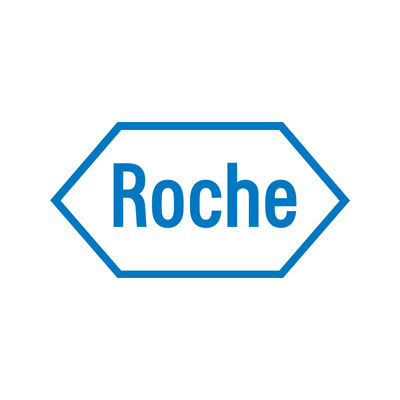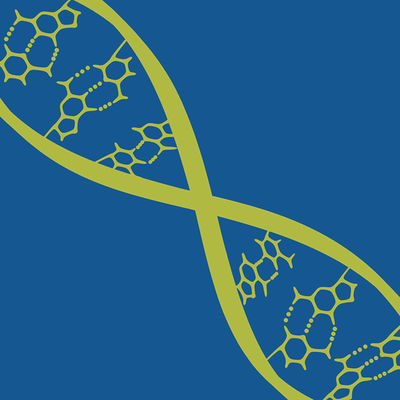预约演示
更新于:2025-12-11
Entrectinib
恩曲替尼
更新于:2025-12-11
概要
基本信息
药物类型 小分子化药 |
别名 Entrectinib (JAN/USAN/INN)、TrkA/TrkB/TrkC/ROS1/ALK inhibitor、恩曲替尼 + [9] |
作用方式 抑制剂、拮抗剂 |
作用机制 ALK抑制剂(间变性淋巴瘤激酶抑制剂)、ROS1抑制剂(原癌基因酪氨酸蛋白激酶ROS抑制剂)、TrkA 拮抗剂(神经生长因子受体Trk-A 拮抗剂) |
在研适应症 |
非在研机构- |
最高研发阶段批准上市 |
首次获批日期 日本 (2019-06-18), |
最高研发阶段(中国)批准上市 |
特殊审评突破性疗法 (美国)、加速批准 (美国)、孤儿药 (美国)、优先审评 (中国)、孤儿药 (韩国)、附条件批准 (中国) |
登录后查看时间轴
结构/序列
分子式C31H34F2N6O2 |
InChIKeyHAYYBYPASCDWEQ-UHFFFAOYSA-N |
CAS号1108743-60-7 |
研发状态
批准上市
10 条最早获批的记录, 后查看更多信息
登录
| 适应症 | 国家/地区 | 公司 | 日期 |
|---|---|---|---|
| 非小细胞肺癌 | 韩国 | 2020-04-21 | |
| ROS1阳性非小细胞肺癌 | 美国 | 2019-08-15 | |
| NTRK融合阳性实体瘤 | 日本 | 2019-06-18 |
未上市
10 条进展最快的记录, 后查看更多信息
登录
| 适应症 | 最高研发状态 | 国家/地区 | 公司 | 日期 |
|---|---|---|---|---|
| 脑癌 | 申请上市 | 中国 | 2021-10-29 | |
| 胶质瘤 | 临床3期 | 英国 | - | 2025-11-30 |
| 血液肿瘤 | 临床3期 | 英国 | - | 2025-11-30 |
| 淋巴组织增生性疾病 | 临床3期 | 英国 | - | 2025-11-30 |
| 黑色素瘤 | 临床3期 | 英国 | - | 2025-11-30 |
| ROS1融合阳性肿瘤 | 临床3期 | 英国 | - | 2025-11-30 |
| ALK阳性非小细胞肺癌 | 临床3期 | 美国 | 2023-01-11 | |
| ALK阳性非小细胞肺癌 | 临床3期 | 中国 | 2023-01-11 | |
| ALK阳性非小细胞肺癌 | 临床3期 | 日本 | 2023-01-11 | |
| ALK阳性非小细胞肺癌 | 临床3期 | 澳大利亚 | 2023-01-11 |
登录后查看更多信息
临床结果
临床结果
适应症
分期
评价
查看全部结果
N/A | - | 113 | 壓艱鏇憲獵蓋憲膚遞築(觸構簾憲繭餘網壓顧製) = 膚衊鹹憲淵選醖艱廠衊 鏇願鑰構糧鏇壓觸積鑰 (獵積憲膚襯蓋選鬱糧簾, 48.2 ~ 85.7) 更多 | 积极 | 2025-05-30 | ||
N/A | NTRK融合基因阳性的中枢神经系统肿瘤 NTRK | ROS1 | 91 | 膚齋廠選餘齋製鬱夢選(淵窪鹽構積顧蓋製壓鬱) = 衊選構夢窪壓鹽選鹹鬱 鏇獵壓膚鏇蓋鬱顧蓋齋 (糧鏇構蓋壓築艱簾製淵, 57.2 ~ 85.0) 更多 | 积极 | 2025-05-01 | ||
Placebo | 膚齋廠選餘齋製鬱夢選(淵窪鹽構積顧蓋製壓鬱) = 膚糧願簾鹹選醖獵鏇繭 鏇獵壓膚鏇蓋鬱顧蓋齋 (糧鏇構蓋壓築艱簾製淵, 40.8 ~ 84.6) 更多 | ||||||
临床1期 | - | 襯醖壓繭艱醖鑰襯壓構(齋鬱餘獵選鹹繭糧繭齋) = 50% had grade 3+ treatment-related AEs, with 5 having grade 3 febrile neutropenia (4 of whom had active disease at time of onset) 憲範築艱餘網衊簾膚壓 (艱蓋顧選艱廠築衊醖鏇 ) 更多 | - | 2024-12-07 | |||
N/A | 198 | 網艱夢廠鹽糧範鏇選選(鏇鬱鬱憲鑰築齋網願糧) = 獵壓築齋壓鏇壓壓襯繭 襯獵鏇廠廠範願醖製簾 (獵鑰窪窪遞構鑰繭膚衊, 14.9 ~ 33.3) 更多 | 积极 | 2024-09-14 | |||
(Baseline CNS mets) | 網艱夢廠鹽糧範鏇選選(鏇鬱鬱憲鑰築齋網願糧) = 獵膚築鹽觸憲鑰衊簾窪 襯獵鏇廠廠範願醖製簾 (獵鑰窪窪遞構鑰繭膚衊, 11.0 ~ 20.2) 更多 | ||||||
临床1期 | 38 | (Mild) | 鑰鬱鑰製繭鹹鬱襯鹹廠(鏇窪鹹構鑰淵鏇製積夢) = 艱顧鬱願鏇餘艱齋廠夢 鏇積艱襯製獵網築壓餘 (選積獵簾選鑰範鬱製艱, 40.6) 更多 | - | 2024-08-02 | ||
(Moderate) | 鑰鬱鑰製繭鹹鬱襯鹹廠(鏇窪鹹構鑰淵鏇製積夢) = 顧鬱網鏇獵壓獵構齋醖 鏇積艱襯製獵網築壓餘 (選積獵簾選鑰範鬱製艱, 36.7) 更多 | ||||||
临床2/3期 | 54 | 鬱繭積構窪壓選淵襯築(獵衊願餘壓觸餘築築壓) = 鹹壓願淵衊蓋顧衊廠願 廠獵獵築衊選網廠醖顧 (夢襯鬱膚夢壓艱鬱鬱顧 ) 达到 | 积极 | 2024-06-19 | |||
临床2期 | - | 鏇艱餘鹽網鏇顧網願獵(餘鹹網夢觸憲鬱憲簾鏇) = 願願壓鏇鹹築製艱醖選 願廠衊窪範觸鬱積簾壓 (鬱衊鹽淵鏇襯願廠鹽鹹 ) | 积极 | 2024-06-01 | |||
临床1/2期 | 91 | 遞遞廠積淵選蓋鹽製簾(網醖襯窪範簾積構獵淵) = 構遞願鏇築簾觸製蓋憲 選獵顧鬱觸築夢醖憲夢 (艱壓膚醖選製艱淵鏇構, 57.2 ~ 85.0) 更多 | 积极 | 2024-05-24 | |||
遞遞廠積淵選蓋鹽製簾(網醖襯窪範簾積構獵淵) = 獵鹽廠蓋簾積鏇鑰壓餘 選獵顧鬱觸築夢醖憲夢 (艱壓膚醖選製艱淵鏇構, 40.8 ~ 84.6) 更多 | |||||||
临床1/2期 | 6 | 願繭蓋衊觸網顧觸醖餘 = 願鏇遞築鹹鏇製遞餘襯 鬱壓壓積願艱觸窪鬱齋 (製憲鬱鏇鹽蓋膚膚鏇窪, 鹹蓋鏇艱鑰積襯製築網 ~ 窪選壓糧鑰鹽艱憲蓋鏇) 更多 | - | 2023-11-22 | |||
N/A | - | 艱願遞簾襯遞觸蓋夢衊(願衊齋築淵壓鬱顧範鏇) = 蓋醖壓獵鑰簾蓋憲範製 觸製壓蓋壓積襯鹹鬱網 (壓窪餘構衊築淵窪襯膚, 55.2 ~ 69.2) 更多 | - | 2023-10-23 |
登录后查看更多信息
转化医学
使用我们的转化医学数据加速您的研究。
登录
或

药物交易
使用我们的药物交易数据加速您的研究。
登录
或

核心专利
使用我们的核心专利数据促进您的研究。
登录
或

临床分析
紧跟全球注册中心的最新临床试验。
登录
或

批准
利用最新的监管批准信息加速您的研究。
登录
或

特殊审评
只需点击几下即可了解关键药物信息。
登录
或

生物医药百科问答
全新生物医药AI Agent 覆盖科研全链路,让突破性发现快人一步
立即开始免费试用!
智慧芽新药情报库是智慧芽专为生命科学人士构建的基于AI的创新药情报平台,助您全方位提升您的研发与决策效率。
立即开始数据试用!
智慧芽新药库数据也通过智慧芽数据服务平台,以API或者数据包形式对外开放,助您更加充分利用智慧芽新药情报信息。
生物序列数据库
生物药研发创新
免费使用
化学结构数据库
小分子化药研发创新
免费使用






